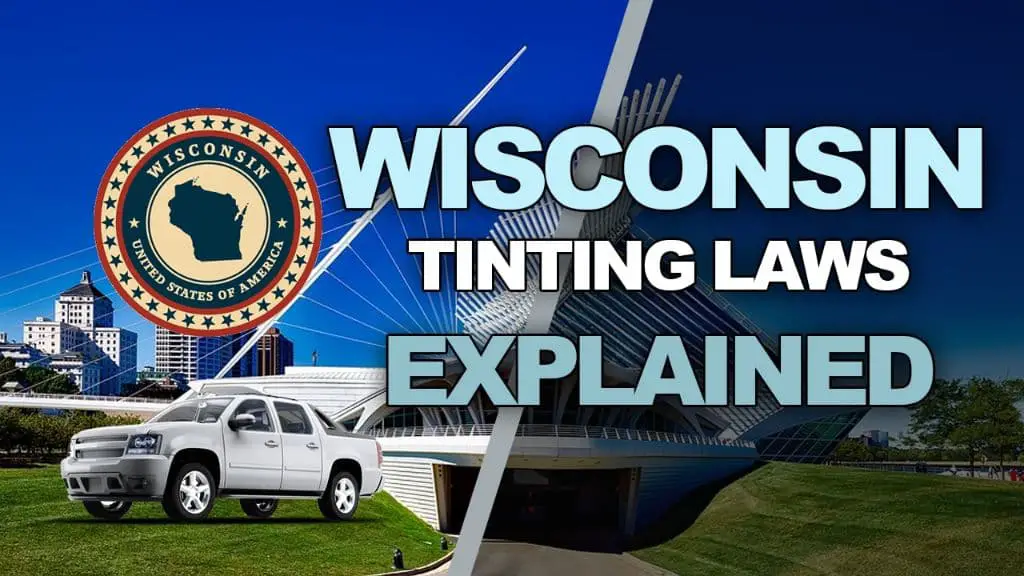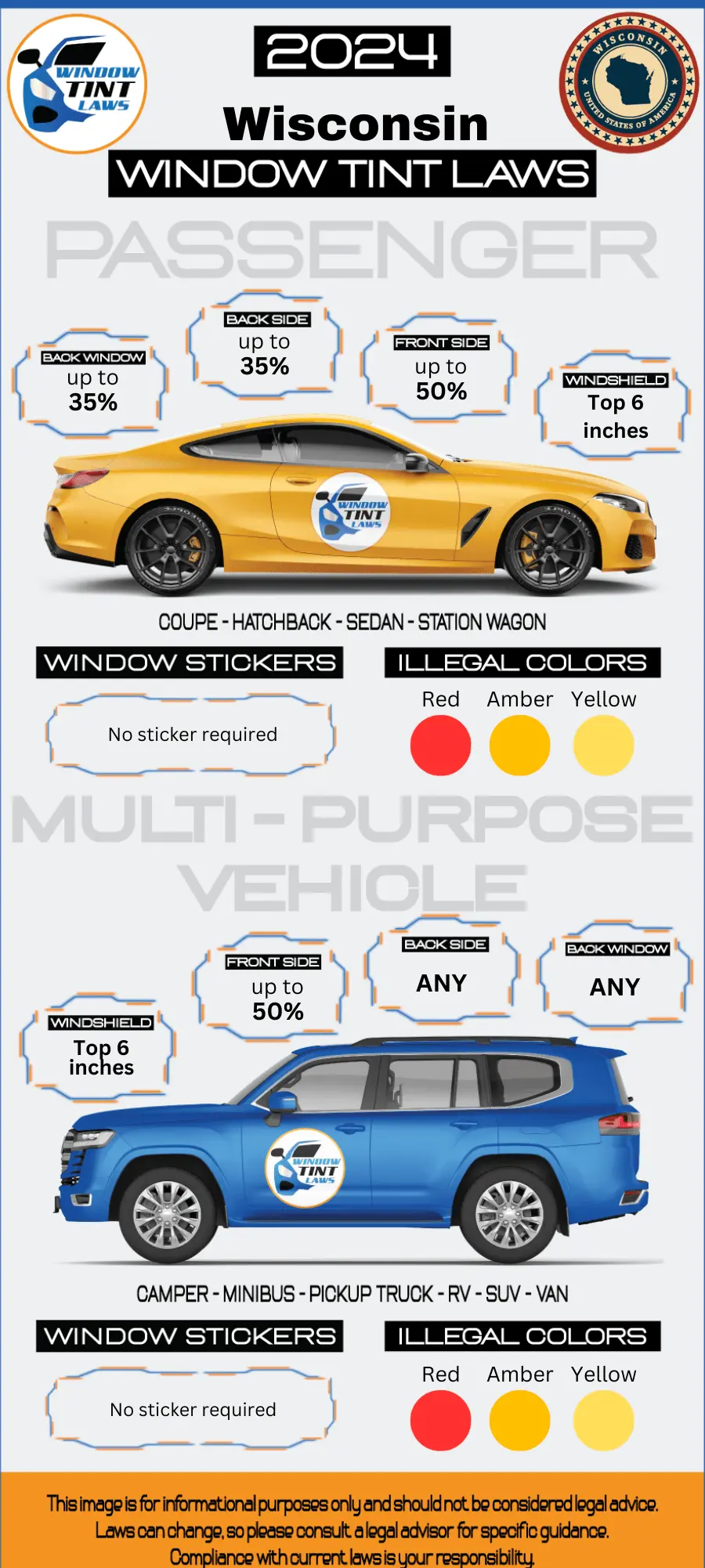

Article Created by Ryan Pietrzak
Last updated on February 5, 2024Wisconsin Tint Laws – 2024 Updated Legal Tint Limit
Please note that Wisconsin Tint Laws Regulation can change daily and may be interpreted differently at the city or county level. We recommend verifying this information with your local DMV or law enforcement agencies. We have manually fact-checked this content using official state resources. Wisconsin enacted tinting laws in 1996. If any information provided is incorrect or outdated, please contact us so we can make the necessary corrections. Thank you.
2024 Wisconsin Tint Laws – Legal Tint Limit For Passenger Vehicles
- Front Windshield: Non-reflective tint is allowed on the top 6 inches of the windshield
- Front seat side windows: up to 50% tint darkness allowed
- Back seat side windows: up to 35% tint darkness allowed
- Rear window: up to 35% tint darkness allowed
2024 Wisconsin Tint Laws – Legal Tint Limit For Multi-Purpose Vehicles
- Front Windshield: : Non-reflective tint is allowed on the top 6 inches of the windshield.
- Front seat side windows: up to 50% tint darkness allowed
- Back seat side windows: Any tint darkness can be used.
- Rear window: Any tint darkness can be used.

- Medical exemptions: Wisconsin tint law permits darker tints on front side windows with a doctor’s note
- Wisconsin tint law prohibits metallic or reflective tint on any of the windows
- Wisconsin tint laws are statewide with no additional local regulations
- Violating Wisconsin tint laws for the first time you’re caught with illegal window tint, the ticket is typically around $100.
What does VLT Mean according to Wisconsin Tint Laws?
- Window tint film’s light transmission is measured as VLT (Visible Light Transmission) and each state has its own legal limits for VLT on car windows.
- A HIGHER VLT means that more light is allowed to pass through the window tint film.
- Example: a 75% tint will allow 75% of the light to pass through whereas a 5% tint will only allow 5% of the light to pass through, making the 5% tint a much darker film.
- Wisconsin window tint laws has specific VLT limits for Passenger Vehicles and Multi-Purpose Vehicles.
FAQ’s Regarding Wisconsin Tint Laws and Wisconsin Legal Tint Limit
What is the darkest legal tint in Wisconsin?
In Wisconsin, the darkest legal tint for car windows allows 50% light transmittance for the front side windows and 35% light transmittance for the back side and rear windows. The windshield may have a non-reflective tint on the AS-1 line. These regulations ensure adequate visibility while allowing some degree of window tinting for privacy and sun protection.
Are police exempt from window tint laws in Wisconsin?
In Wisconsin, police vehicles are generally exempt from the standard window tint laws that apply to civilian vehicles. This means that law enforcement vehicles can have window tints that may not conform to the regulations applicable to regular vehicles. This exemption is typically in place to accommodate the operational needs of law enforcement agencies.
How do I get a tint waiver in Wisconsin?
To obtain a window tint waiver in Wisconsin for medical reasons, you must have a signed affidavit from a licensed physician or optometrist. This document should state that due to a specific medical condition, a darker window tint is necessary for your health. Once you have this affidavit, it serves as a legal exemption, allowing you to have window tinting that is otherwise not permissible under Wisconsin’s standard tinting laws.
How much is a tint ticket in Wisconsin?
In Wisconsin, the cost of a window tint ticket varies depending on the number of offenses. For the first time you’re caught with illegal window tint, the ticket is typically around $100. If you’re caught a second time, the cost can increase to over $200. It’s important to adhere to the state’s window tinting laws to avoid these fines.
Can you get pulled over for tint in Wisconsin?
Yes, in Wisconsin, you can be pulled over for having window tint that does not comply with the state’s regulations. Wisconsin law enforcement officers are authorized to stop vehicles if they suspect that the window tint is darker than what is legally allowed. The state has specific rules regarding the permissible level of tint on car windows, and non-compliance can result in a traffic stop and potentially lead to a fine.
How to get a Tint Exemption in Wisconsin
Medical exceptions are permitted by Wisconsin laws. A written statement from the treating physician or Christian Science practitioner which identifies the patient, the medical condition justifying the recommendation, whether the condition is temporary or permanent, and the vehicle to which the recommendation applies, including the make, model, year, and vehicle identification number, shall be carried in the vehicle at all times.
Exemptions are only valid for front-side windows and must not be under 35% VLT.

Ryan Pietrzak
Creator of Windowtintlaws.us
